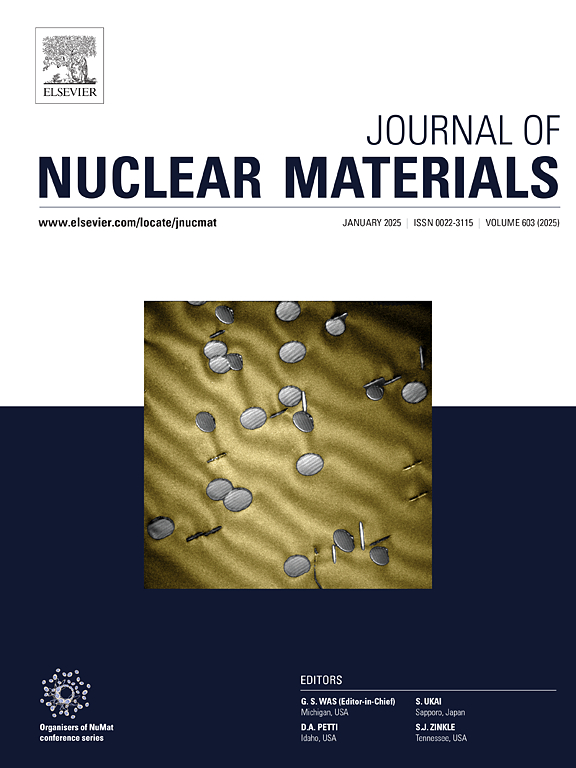Thermochemical bounds on UCO TRISO kernel compositions
IF 2.8
2区 工程技术
Q3 MATERIALS SCIENCE, MULTIDISCIPLINARY
引用次数: 0
Abstract
Highly-detailed equilibrium thermodynamics calculations were used to derive bounds on safe fresh UCO TRISO fuel kernel chemistries, in terms of the fraction of UCx. The lower bound on UCx was chosen to limit CO pressure, and the upper bound to ensure oxidation of radionuclide fission and transmutation products of concern. The bounds can be calculated with respect to both target burnup and fuel temperature. Calculated bounds for a demonstration fuel design similar to the AGR-2 experiment are in good agreement with previously-calculated lower bounds and experimental evidence used to determine upper bounds, and indicate that reference fuel designs such as AGR-2 and MHTGR-350 are well-within the safe composition region even for burnup as high as 21.3% FIMA. Predicted speciations of cesium, palladium, silver, barium, strontium, and zirconium were examined, and recommendations for thermodynamic assessments of relevant systems provided.
求助全文
约1分钟内获得全文
求助全文
来源期刊

Journal of Nuclear Materials
工程技术-材料科学:综合
CiteScore
5.70
自引率
25.80%
发文量
601
审稿时长
63 days
期刊介绍:
The Journal of Nuclear Materials publishes high quality papers in materials research for nuclear applications, primarily fission reactors, fusion reactors, and similar environments including radiation areas of charged particle accelerators. Both original research and critical review papers covering experimental, theoretical, and computational aspects of either fundamental or applied nature are welcome.
The breadth of the field is such that a wide range of processes and properties in the field of materials science and engineering is of interest to the readership, spanning atom-scale processes, microstructures, thermodynamics, mechanical properties, physical properties, and corrosion, for example.
Topics covered by JNM
Fission reactor materials, including fuels, cladding, core structures, pressure vessels, coolant interactions with materials, moderator and control components, fission product behavior.
Materials aspects of the entire fuel cycle.
Materials aspects of the actinides and their compounds.
Performance of nuclear waste materials; materials aspects of the immobilization of wastes.
Fusion reactor materials, including first walls, blankets, insulators and magnets.
Neutron and charged particle radiation effects in materials, including defects, transmutations, microstructures, phase changes and macroscopic properties.
Interaction of plasmas, ion beams, electron beams and electromagnetic radiation with materials relevant to nuclear systems.
 求助内容:
求助内容: 应助结果提醒方式:
应助结果提醒方式:


